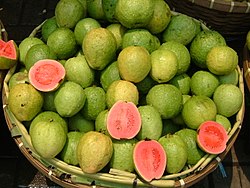
A number of popular and commercially important food plants are native to the Americas. Some are endemic, meaning they occur naturally only in the Americas and nowhere else, while others occur naturally both in the Americas and on other continents as well.
Contents
When complete, the list below will include all food plants native to the Americas (genera marked with a dagger † are endemic), regardless of when or where they were first used as a food source. For a list of food plants and other crops which were only introduced to Old World cultures as a result of the Columbian Exchange touched off by the arrival of Christopher Columbus in 1492, see New World crops. [1]




